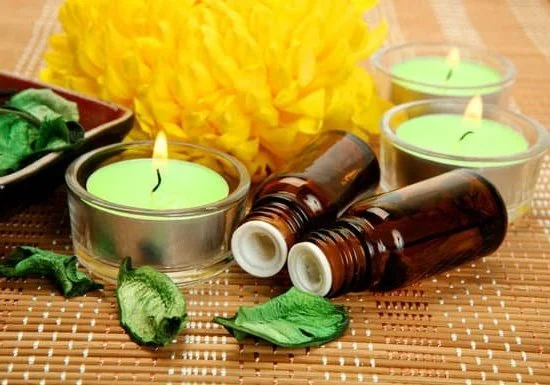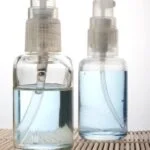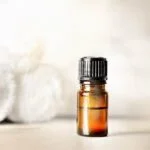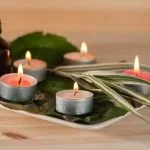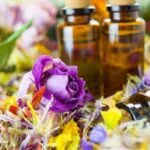Aromatherapy has long been recognized as a powerful tool for promoting relaxation, reducing stress, and enhancing overall well-being. In today’s fast-paced and high-stress society, the demand for effective stress management techniques is greater than ever. This is why teaching an aromatherapy for stress class can be incredibly valuable for both instructors and participants alike.
In this introductory section, we will explore the importance of aromatherapy for stress and why it is essential to teach this topic. Aromatherapy has been used for centuries to alleviate symptoms of stress, anxiety, and tension by harnessing the natural healing properties of essential oils. By incorporating aromatherapy into our daily lives, we can cultivate a sense of balance, calmness, and clarity.
The goal of teaching an aromatherapy for stress class goes beyond simply sharing information about essential oils. It is about empowering individuals with the knowledge and skills to effectively manage their stress levels using aromatherapy techniques. Participants in these classes will gain a deeper understanding of how specific essential oils can promote relaxation, reduce anxiety, and improve mental focus. Moreover, they will learn practical ways to incorporate aromatherapy into their self-care routines to create lasting change in their lives.
Teaching an aromatherapy for stress class provides an opportunity to guide others towards a healthier and more balanced lifestyle. By equipping individuals with the tools they need to manage their stress levels effectively, we contribute to their overall well-being and enhance their quality of life. So let us delve into the basics of aromatherapy and explore how this ancient practice can help us navigate the challenges of modern-day living.
The Basics of Aromatherapy
Aromatherapy is the practice of using essential oils to improve physical, mental, and emotional well-being. Essential oils are highly concentrated plant extracts that have unique properties and therapeutic benefits. Understanding the basics of aromatherapy is essential for teaching an aromatherapy for stress class.
What are Essential Oils?
Essential oils are volatile liquids that are derived from various parts of plants such as flowers, leaves, stems, bark, seeds, or roots. They contain the natural chemicals and aromatic compounds of plants that give them their distinct fragrance and therapeutic properties. Each essential oil has its own composition and characteristics, which determine its specific effects on the mind and body.
The Effects of Essential Oils on the Mind and Body
When inhaled or applied topically (after dilution), essential oils can have a profound impact on emotions, mood, and physical health. Different essential oils have different properties that can help reduce stress, promote relaxation, improve focus and concentration, enhance sleep quality, boost energy levels, relieve pain and inflammation, and support overall well-being.
For example, lavender essential oil is known for its calming properties and can help reduce anxiety and promote restful sleep. Peppermint essential oil has a cooling effect that can alleviate headaches and mental fatigue while improving alertness. Bergamot essential oil has mood-lifting qualities that can help combat depression.
Understanding the effects of different essential oils on the mind and body allows you to select appropriate ones for your aromatherapy for stress class curriculum. By educating your students about these effects, you empower them to make informed choices when creating personalized blends tailored to their specific needs.
Preparing for the Class
When teaching an aromatherapy for stress class, it is essential to create an environment that promotes relaxation and learning. In this section, we will discuss the importance of gathering materials and setting the mood for your class.
Gathering Materials
Before conducting your aromatherapy for stress class, it is crucial to gather all the necessary materials. This includes essential oils, carrier oils, diffusers or oil burners, cotton balls or tissues, mixing containers, labels, and writing utensils. Make sure to have a variety of essential oils on hand that are known for their stress-relieving properties such as lavender, chamomile, bergamot, and ylang-ylang.
In addition to these basic supplies, consider providing participants with informational handouts or pamphlets about aromatherapy and its benefits. These resources can be helpful references for participants to review after the class.
Setting the Mood
Creating a conducive atmosphere plays a significant role in enhancing the effectiveness of your aromatherapy for stress class. Begin by selecting a quiet and comfortable space where participants can focus without distractions. Dimming the lights and playing soft instrumental music can further promote relaxation.
Consider incorporating comforting elements such as candles or aromatic flowers in your space to enhance the ambiance. Lighting scented candles or placing fresh flowers infused with calming essential oils around the room can help set a soothing mood.
Remember to advise participants to dress comfortably and suggest bringing any additional items that may contribute to their relaxation experience – such as blankets or cushions.
By gathering all necessary materials and creating a serene atmosphere, you will ensure that your aromatherapy for stress class provides a peaceful sanctuary where participants can fully immerse themselves in learning and practicing stress-relieving techniques.
Crafting the Curriculum
When teaching an aromatherapy for stress class, it is essential to carefully craft the curriculum to ensure that participants receive comprehensive knowledge and skills. By determining the essential topics to cover in the class, you can provide a well-rounded education on aromatherapy and stress management. Here are some key points to consider when crafting your curriculum:
- Research and Identifying Key Topics: Before creating your curriculum, it is crucial to conduct thorough research on both aromatherapy and stress management. This will help you identify the key topics that should be covered in your class. Some examples of essential topics may include an introduction to aromatherapy, understanding the science behind essential oils, common essential oils used for stress relief, methods of application, best practices for blending oils, etc.
- Sequencing and Organizing Topics: Once the key topics have been identified, it is important to sequence and organize them in a logical manner. Start with an introduction to aromatherapy and its benefits before delving into specific essential oils for stress relief. Consider grouping related topics together or building upon previous concepts as you progress through the curriculum. This will help students grasp foundational knowledge before moving on to more advanced concepts.
- Tailoring Content to Participants: It is important to consider the needs and interests of your participants when crafting your curriculum. Are they beginners who need a broad overview of aromatherapy? Or are they more experienced individuals seeking advanced techniques? Take into account their prior knowledge and experience levels, as well as any specific concerns or preferences they may have expressed during registration.
- Including Practical Applications: While theoretical knowledge is important, practical applications are equally valuable in an aromatherapy for stress class. Incorporate hands-on activities where participants can directly apply what they have learned. For example, teach them how to create personalized aromatherapy blends or guide them through a relaxation exercise using essential oils. This will help participants develop confidence and practical skills that they can continue to use after the class.
By carefully determining the essential topics to cover in your class, sequencing and organizing them effectively, tailoring content to participants’ needs, and including practical applications, you can create a curriculum that provides a well-rounded education on aromatherapy for stress. This will ensure that your students leave the class with a comprehensive understanding of aromatherapy techniques and the ability to incorporate them into their daily lives for stress relief.
Effective Teaching Strategies
One of the key aspects of teaching an Aromatherapy for Stress class is engaging students and encouraging active participation. Without student engagement, the class may not be successful in achieving its objectives. Therefore, it is important for instructors to employ effective teaching strategies that create a dynamic and interactive learning environment.
One strategy to engage students is through the use of visual aids and multimedia. Utilizing visuals such as PowerPoint presentations or videos can enhance understanding and retention of information.
These tools can be used to explain complex concepts, showcase the benefits of specific essential oils, or demonstrate techniques for blending oils. In addition, incorporating hands-on activities, such as smelling different essential oils or creating simple blends during the class, can further enhance engagement and allow participants to experience aromatherapy firsthand.
Another effective teaching strategy is promoting discussion and collaboration among students. Encourage students to share their own experiences with stress and why they are interested in learning about aromatherapy. Foster a supportive and inclusive environment where participants feel comfortable expressing themselves and asking questions. Use open-ended questions to prompt discussion, encourage critical thinking, and facilitate knowledge sharing among participants.
Furthermore, incorporating group activities or exercises can help foster a sense of community within the class. For example, divide participants into small groups and assign each group a specific topic related to aromatherapy for stress.
Ask them to research and present their findings to the rest of the class or engage in group discussions based on assigned readings or case studies relating to aromatherapy applications. This not only encourages active participation but also allows students to learn from one another’s experiences.
Ultimately, effective teaching strategies that promote engagement and participation will contribute to a positive learning experience for all participants in an Aromatherapy for Stress class.
- Utilize visual aids such as PowerPoint presentations or videos.
- Incorporate hands-on activities such as smelling different essential oils or creating blends.
- Encourage discussion and collaboration among students.
- Use open-ended questions to foster critical thinking and knowledge sharing.
- Incorporate group activities or exercises to foster a sense of community.
Hands-on Activities
In the hands-on activities section of the Aromatherapy for Stress class, participants will have the opportunity to learn and practice creating personalized aromatherapy blends. This section is crucial as it allows students to not only gain theoretical knowledge about essential oils but also acquire practical skills that they can apply in their daily lives.
To begin this section, start by providing a brief overview of the different methods of aromatherapy application, such as inhalation, topical application, and diffusion. Explain the benefits and considerations of each method, emphasizing safety precautions and proper dilution ratios. Use an unordered list to illustrate the key points.
Next, introduce various essential oils that are specifically known for their stress-relieving properties. Provide a description of each oil’s aroma and explain how it affects the mind and body. Encourage participants to engage their senses by allowing them to sniff or sample small amounts of each oil. You can either have these oils displayed on a table where participants can explore them individually or create sample bottles with diluted blends that they can try out during the class.
Once participants are familiar with different essential oils, guide them through the process of creating their own personalized aromatherapy blend. Provide a variety of carrier oils, such as sweet almond or jojoba oil, and essential oils that complement one another in terms of scent profile and therapeutic effects. Give each participant a worksheet that includes suggested recipes along with blank spaces for them to personalize their blends based on their preferences.
Encourage participants to experiment and customize their blends while emphasizing proper dilution ratios and safety guidelines. Emphasize that everyone’s preferences may vary when it comes to scent intensity, so finding what works best for them is key. During this activity, be available to answer questions and provide guidance as needed.
By engaging in hands-on activities like creating personalized aromatherapy blends, participants will develop confidence in using essential oils for self-care purposes. These activities also offer a unique opportunity for students to bond and learn from one another as they share their experiences and discuss their blend creations. Through this interactive learning experience, participants can truly understand and appreciate the power of aromatherapy for stress relief.
Providing Practical Guidance
Incorporating aromatherapy into daily self-care practices can be a powerful way to manage stress and enhance overall well-being. As an aromatherapy instructor, providing practical guidance to your class participants on how they can integrate essential oils into their daily routines is crucial. This section will explore some useful tips and suggestions that you can share with your students.
One important tip to emphasize is the idea of creating a consistent self-care routine. Encourage participants to set aside dedicated time each day for their aromatherapy practice. This could involve diffusing essential oils in the morning while getting ready for the day, applying a calming blend before bedtime, or using roll-on blends throughout the day as needed.
Another practical suggestion is to encourage individuals to experiment with different methods of using essential oils. Some may prefer inhalation methods, such as using an inhaler or nasal inhaler, while others may find topical application more effective. Educate your students on proper dilution ratios and safe application techniques so they can confidently use essential oils on their skin.
Furthermore, remind participants that it’s important to choose high-quality essential oils from reputable sources. Emphasize the importance of purchasing oils that are pure and free from synthetic additives or contaminants. Additionally, encourage them to start with a few basic essential oils and gradually expand their collection as they become more familiar with their effects.
Providing practical guidance on incorporating aromatherapy into daily self-care practices not only helps students understand how to use essential oils effectively but also empowers them to take control of their own well-being. By sharing these tips, you are equipping participants with valuable knowledge that they can apply long after the class has ended.
| Practical Guidance Tips |
|---|
| 1. Set aside dedicated time each day for aromatherapy practice. |
| 2. Encourage experimentation with different methods of use, such as inhalation or topical application. |
| 3. Stress the importance of choosing high-quality essential oils from reputable sources. |
Addressing Safety Concerns
As an aromatherapy instructor, it is crucial to prioritize the safety of your students when teaching a class on aromatherapy for stress. This includes educating participants on the proper dilution and handling of essential oils. While essential oils offer numerous benefits, they can be potent substances that require careful use.
Proper dilution is key when working with essential oils. Undiluted essential oils can cause skin irritation, sensitization, or even harm if ingested.
It is important to emphasize the importance of using carrier oils such as jojoba oil, sweet almond oil, or coconut oil to safely dilute essential oils before applying them to the skin. Teaching participants how to calculate appropriate concentrations based on age, health conditions, and intended use will empower them to confidently incorporate aromatherapy into their self-care routines.
In addition to proper dilution, it is essential to educate participants about safe handling practices for essential oils. Essential oils should always be stored in dark glass bottles in a cool and dry environment to protect their potency. Children and pets should not have access to these containers due to the potential risks associated with ingestion or improper use. Furthermore, emphasizing the importance of keeping essential oils away from open flames and heat sources will prevent accidental fires or injuries.
Providing participants with a comprehensive guide on safe usage guidelines for different application methods (such as topical use, inhalation, or diffusion) is vital for ensuring their well-being. Additionally, teaching individuals how to conduct patch tests before using new essential oils and advising against prolonged exposure without breaks will minimize the risk of adverse reactions.
By addressing safety concerns and educating participants on proper dilution and handling practices for essential oils, you are equipping them with the knowledge they need to safely enjoy the benefits of aromatherapy for stress relief.
| Key Points to Cover | Importance |
|---|---|
| Proper dilution of essential oils using carrier oils | Prevents skin irritation and sensitization, ensures safe topical application of essential oils |
| Different methods of application and their safety guidelines | Teaches participants how to use essential oils safely according to their preferred method (topical, inhalation, diffusion) |
| Safe storage and handling practices for essential oils | Prevents accidental ingestion or improper use, protects the potency and quality of essential oils |
Taking Care of Yourself
As an aromatherapy instructor, it is important to prioritize self-care and manage stress in order to effectively teach your class on aromatherapy for stress. Teaching techniques for managing stress will not only benefit yourself but also serve as a valuable example for your students. Here are some strategies you can implement to take care of yourself and promote a healthy learning environment:
- Practice Self-Care: Make sure to prioritize self-care practices such as regular exercise, getting enough sleep, and maintaining a balanced diet. Allow yourself time for relaxation and engage in activities that bring you joy and reduce stress. By taking care of yourself, you will be better equipped to handle the demands of teaching and create a positive atmosphere in the classroom.
- Set Boundaries: Establish clear boundaries between your personal life and work life. It is important to carve out time for yourself outside of teaching commitments. Avoid overworking or neglecting your own needs in order to prevent burnout. Communicate these boundaries with your students so they understand the importance of respecting your time and space.
- Seek Support: Connect with other aromatherapy instructors or individuals who share similar interests in holistic wellness. Join professional organizations or online communities where you can exchange ideas, seek advice, and receive support from like-minded individuals. Engaging with others who understand the demands of teaching can provide valuable insights and help alleviate feelings of isolation.
To further enhance your well-being as an instructor, consider incorporating mindfulness practices into your teaching routine. Encourage students to practice deep breathing exercises, meditation, or gentle stretching during class sessions to promote relaxation and stress reduction.
Remember that taking care of yourself is crucial not just for your own well-being but also for creating a positive learning environment where students feel supported and inspired. By practicing self-care techniques and managing stress effectively, you will become a more effective teacher and advocate for aromatherapy for stress relief.
Evaluating Success
In order to measure the impact of your Aromatherapy for Stress class, it is crucial to develop effective assessment methods. These assessment methods will help you evaluate whether your class has achieved its intended goals and whether participants have gained a deeper understanding of aromatherapy and its stress-relieving benefits. There are several assessment strategies you can employ to measure the success of your class.
One method of assessing the impact of your aromatherapy class is through pre – and post-class surveys. By asking participants to complete a survey before and after attending your class, you can gather valuable data on their knowledge, perceptions, and behaviors related to aromatherapy for stress. This will allow you to gauge if there has been a significant change in their understanding and application of aromatherapy techniques.
Another effective assessment strategy is through observation and feedback during hands-on activities. As participants engage in creating personalized aromatherapy blends, observe their technique, ask questions about their choices, and provide guidance when necessary. Additionally, encourage participants to share their experiences with others in the class or provide written reflections on what they have learned throughout the course. This qualitative information can provide insights into how impactful your teaching strategies were and how well participants understood the material.
Lastly, incorporating a practical component into your assessment methods can be highly beneficial. Consider assigning participants a small project or task that allows them to apply what they have learned in a real-world setting.
For example, you could ask them to create an aromatherapy blend at home and document its effects on their own stress levels over a given period of time. This not only reinforces what they have learned but also enables them to experience firsthand how aromatherapy can positively impact their well-being.
By implementing these assessment methods, you will be able to evaluate the success of your Aromatherapy for Stress class more accurately. The data collected from pre – and post-class surveys, observation and feedback, and practical assignments will provide valuable insights into the effectiveness of your teaching strategies as well as the overall impact of the class on participants’ understanding and application of aromatherapy for stress relief.
| Assessment Method | Description |
|---|---|
| Pre – and post-class surveys | Gather data on participants’ knowledge, perceptions, and behaviors related to aromatherapy for stress before and after the class. |
| Observation and feedback during hands-on activities | Observe participants’ techniques during hands-on activities, ask questions, and encourage them to share their experiences or provide written reflections. |
| Practical assignments | Assign participants a task that allows them to apply what they have learned in a real-world setting, such as creating an aromatherapy blend at home and documenting its effects on their stress levels. |
Conclusion
In conclusion, teaching an aromatherapy for stress class can be a rewarding and fulfilling experience. By understanding the basics of aromatherapy, gathering materials, and crafting a comprehensive curriculum, instructors can effectively engage students and encourage their active participation. Hands-on activities, such as teaching participants how to create personalized aromatherapy blends, provide valuable practical knowledge that can be incorporated into daily self-care practices.
Additionally, addressing safety concerns is crucial in ensuring that participants are properly educated on the dilution and handling of essential oils. By providing practical guidance and sharing tips for incorporating aromatherapy into daily life, instructors can empower their students to take control of their wellbeing and manage stress effectively. It is important to remind participants that everyone’s journey with aromatherapy will be unique, and individual experimentation and exploration is encouraged.
As an aromatherapy instructor, it is also essential to prioritize self-care and implement stress management techniques in your own life. Taking care of yourself not only benefits your personal wellbeing but also sets a positive example for your students. Furthermore, developing assessment methods to measure the impact of the class allows instructors to gauge their effectiveness and make necessary adjustments for future classes.
Overall, teaching an aromatherapy for stress class provides an opportunity to educate and inspire individuals in taking proactive steps towards managing their stress levels naturally. By providing encouragement and guidance for future classes, instructors can ensure that this beneficial practice continues to make a positive impact on the lives of many.
Frequently Asked Questions
How do you teach aromatherapy classes?
When teaching aromatherapy classes, it is important to start with the basics. Students need to have a solid understanding of what aromatherapy is and how it works before diving into more specific topics. Aromatherapy classes often cover the history and origins of essential oils, as well as the various methods of extraction. Additionally, students learn about different carrier oils and their uses in blending essential oils.
It is crucial to provide hands-on experiences where students can create their own blends and understand the importance of proper dilution. Safety considerations, such as potential contraindications and proper storage of essential oils, should also be covered in these classes. Ultimately, an effective aromatherapy class combines both theoretical knowledge and practical application for a comprehensive learning experience.
How can aromatherapy help with stress?
Aromatherapy can be a helpful tool in managing stress due to its ability to impact our emotions and mood. Essential oils have unique properties that can calm and relax the mind, promoting a sense of well-being. For instance, lavender oil is widely known for its calming effects on the nervous system, making it beneficial for reducing stress and anxiety levels.
Citrus oils like bergamot or sweet orange oil can uplift mood and provide an energizing effect that helps combat stress-related fatigue. Inhalation or diffusion methods are commonly used in aromatherapy for stress relief; simply inhaling these soothing scents has been shown to directly affect brain activity by triggering changes in neurotransmitter levels. It is crucial to note that while aromatherapy can be supportive in managing stress, it should not replace professional medical advice or treatment when needed.
What techniques are used in aromatherapy?
A variety of techniques are employed in aromatherapy to harness the benefits of essential oils effectively. One commonly used technique is inhalation therapy, where aromatic molecules from essential oils are breathed in through the nose or mouth either directly or by using methods like steam inhalation or diffusers. Through this method, essential oil molecules can easily reach the olfactory system and impact emotions, mood, and even physiological functions. Another widely used technique is topical application, where essential oils are diluted in carrier oils or other mediums and applied to the skin.
This allows for absorption through the skin, where the molecules are then transported throughout the body. Massage therapy often incorporates this technique, combining the benefits of touch with aromatherapy to promote relaxation and physical healing. Additionally, aromatic baths, compresses, and sprays are other techniques used in aromatherapy to leverage essential oil properties for various purposes such as muscle tension relief or skin nourishment. It is important to note that proper formulation and dilution guidelines should always be followed to ensure safety when using these techniques.

Are you looking for a natural way to improve your health and wellbeing?
If so, aromatherapy may be the answer for you.

